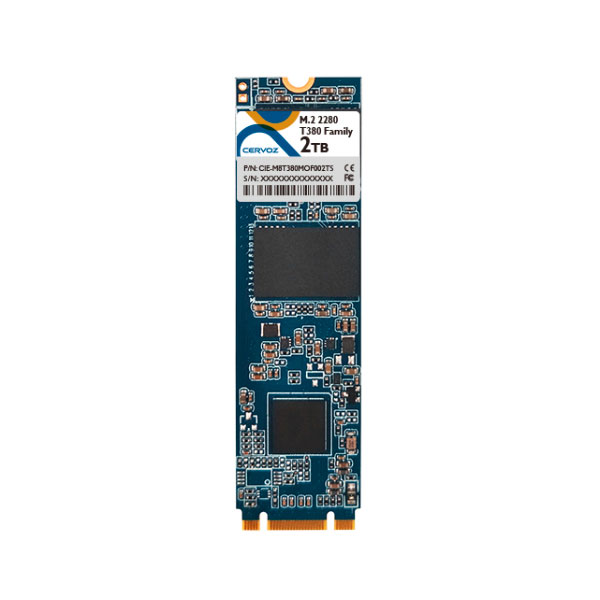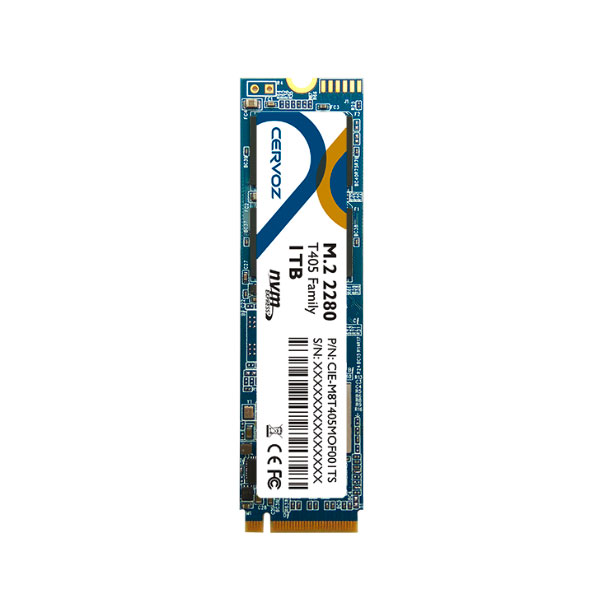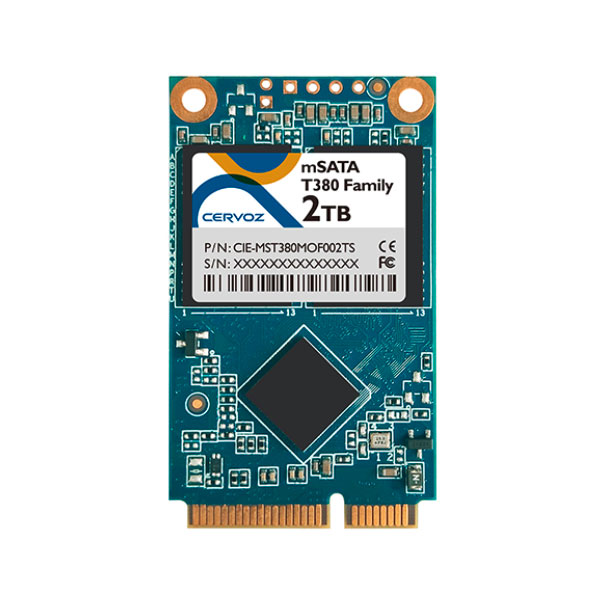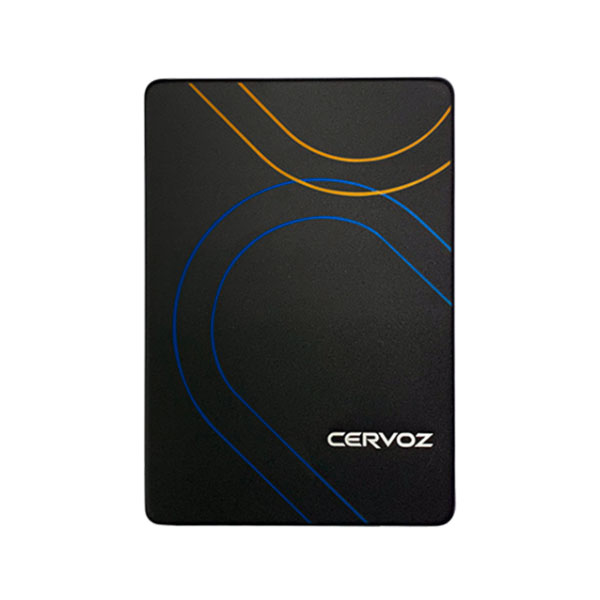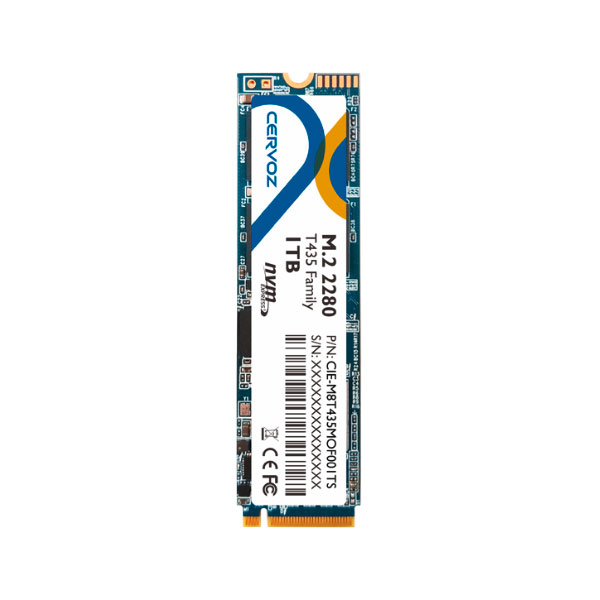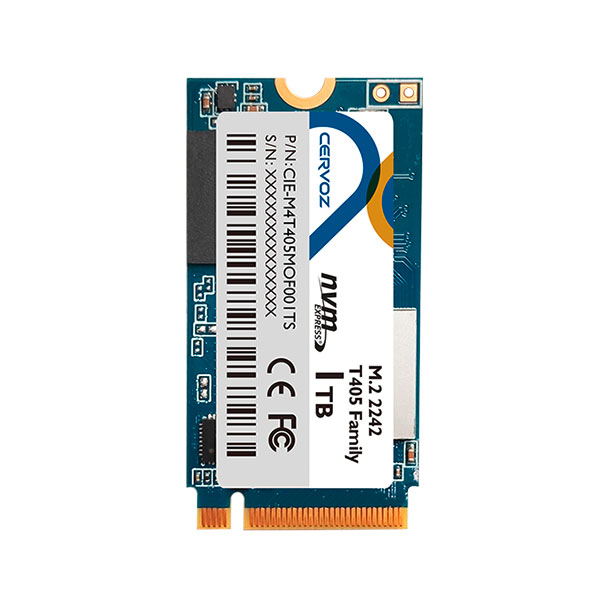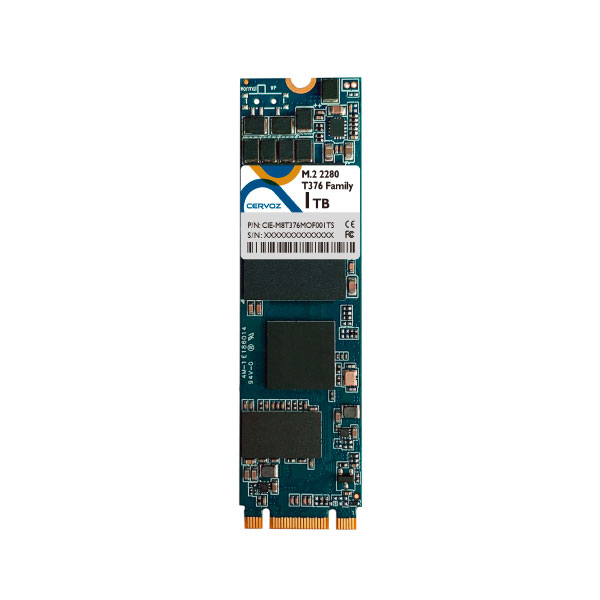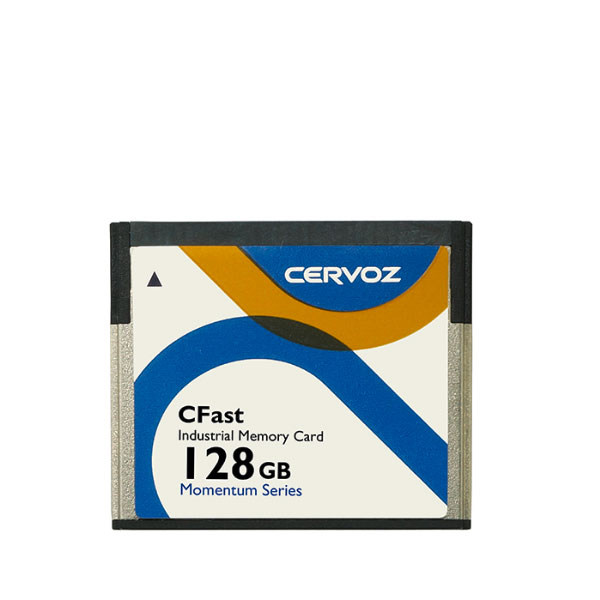SSD
Flash-based industrial SSDs (solid-state drives) are used where information needs to be stored in the smallest of spaces. The types range from industrial 2.5" SSDs to industrial CFast cards.

Price on request
Price on request
Price on request
Industrial SSDs are specially designed storage solutions that can withstand the extreme demands and harsh conditions of industrial environments. These high-performance SSDs offer a variety of features and are available in different form factors. This enables them to meet the requirements of different industries.
They are usually designed for an extended temperature range and can therefore function reliably in environments with extreme temperatures, both hot and cold. This is important when the SSD is used in outdoor applications or in industrial plants. Industrial SSDs often also have integrated functions to protect against data loss in the event of sudden power failures.
Designs of industrial SSDs:
2,5-inch SATA-SSDs: These SSDs have the same form factor as conventional hard disks and are therefore easy to integrate into existing systems. 2.5-inch SATA SSDs are a common form of solid state drive that are widely used due to their size and SATA interface. The SATA (Serial ATA) interface is responsible for connecting the SSD to the motherboard or memory controller. SATA III is the most common version and offers a maximum transfer speed of 6 Gbit/s.
M.2 SATA-SSDs: M.2 refers to the form factor of the SSD. M.2 SSDs are smaller and more compact than 2.5-inch SATA SSDs, which makes them particularly suitable for thinner and lighter devices such as ultrabooks and tablets. M.2 SATA SSDs use the SATA interface, similar to 2.5-inch SATA SSDs. It is important to note that M.2 also supports NVMe (Non-Volatile Memory Express) SSDs, which allow for faster data transfer. However, M.2 SATA SSDs are limited to SATA speeds.
mSATA-SSDs: mSATA SSDs are smaller than conventional 2.5-inch SATA SSDs, which makes them particularly suitable for compact devices such as ultrabooks and netbooks. The mSATA form factor is physically smaller and resembles a mini PCIe card. mSATA SSDs use the SATA interface, similar to 2.5-inch SATA SSDs and M.2 SATA SSDs. The maximum transfer speed corresponds to the SATA III specification of 6 Gbit/s.
CFast-SSDs: CompactFlash (CFast) SSDs are a special type of solid state drive that combine the CompactFlash form factor and the SATA interface. CFast SSDs use the SATA interface, similar to 2.5-inch SATA SSDs. The SATA III interface enables a maximum data transfer speed of 6 Gbit/s.
PCIe/NVMe-SSDs: They use the M.2 form factor or can be plugged into PCIe slots as an expansion card. The M.2 form factor is particularly widespread in slim laptops and ultrabooks. PCIe/NVMe SSDs offer significantly higher data transfer rates compared to SATA SSDs. The PCIe 3.0 interface, which is the most commonly used, can achieve speeds of up to 8 GT/s per lane, and PCIe 4.0 can increase this to 16 GT/s per lane.
Special features of industrial SSDs:
3D NAND Flash: also known as 3D V-NAND or vertical NAND, is an advanced form of NAND flash memory technology. In contrast to conventional NAND flash, where the memory cells lie on a two-dimensional surface, with 3D NAND flash the cells are stacked vertically. This enables a higher storage density.
TRIM: With SSDs, TRIM means that the operating system tells the SSD which blocks are no longer required. If the operating system supports TRIM and the SSD does too, the operating system sends the TRIM command to the SSD to mark the blocks that are actually no longer required as "released". The SSD can then clean up these blocks marked as no longer needed in the background, which optimizes the erasure process and improves the performance of the SSD. TRIM is particularly important to ensure that an SSD maintains consistent performance even after prolonged use.
S.M.A.R.T: S.M.A.R.T stands for "Self-Monitoring, Analysis and Reporting Technology" and is a technology that is built into many modern storage devices, including hard disk drives (HDDs) and solid state drives (SSDs). The main purpose of S.M.A.R.T is to provide early warnings of potential problems with the storage device before a complete failure occurs.
Buffers: Storage devices such as hard disk drives (HDDs), solid state drives (SSDs) and even optical drives use buffers to optimize performance and efficiency. It is important to note that the buffer content can be volatile (lost when the device is turned off) or non-volatile (retained even when the device is turned off), depending on the type of storage medium and the use of the buffer.
PowerGuard: This function ensures that in the event of a sudden power failure, the power supply is maintained until all data still in the storage process has been saved. It works like a UPS integrated into the SSD and prevents possible data loss. To do this, the integrated tantalum capacitors are permanently charged with 12 V.
MIL-STD-810G: MIL-STD-810G refers to a military standard developed by the US Department of Defense. The term stands for "Military Standard 810G" and describes a series of test methods and guidelines for environmental conditions that military equipment should be able to withstand. The "G" in the designation stands for the version, and "MIL-STD-810G" is an updated version of the standard that describes various environmental tests for military equipment.


